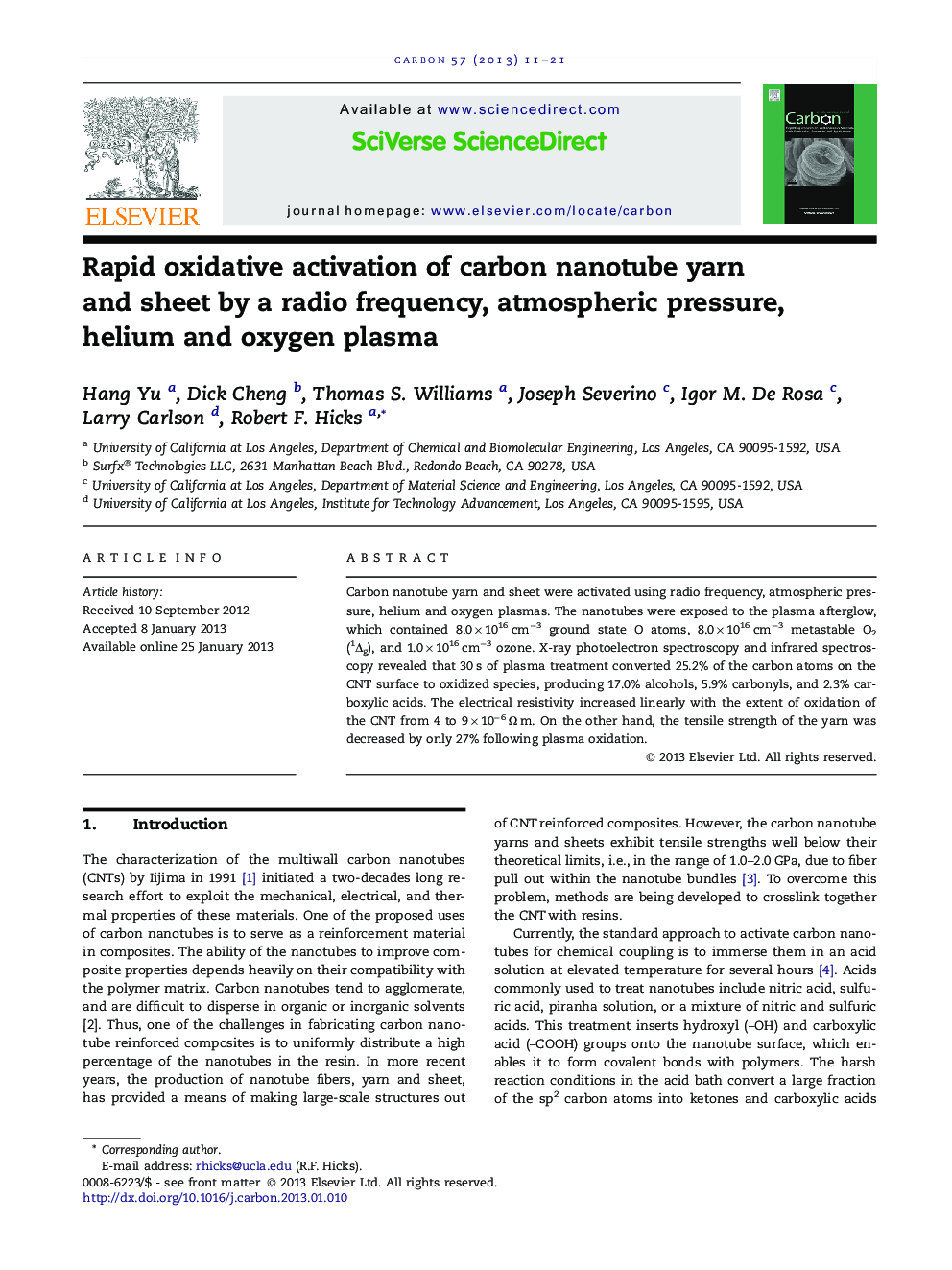| Article ID | Journal | Published Year | Pages | File Type |
|---|---|---|---|---|
| 7856778 | Carbon | 2013 | 11 Pages |
Abstract
Carbon nanotube yarn and sheet were activated using radio frequency, atmospheric pressure, helium and oxygen plasmas. The nanotubes were exposed to the plasma afterglow, which contained 8.0 Ã 1016 cmâ3 ground state O atoms, 8.0 Ã 1016 cmâ3 metastable O2 (1Îg), and 1.0 Ã 1016 cmâ3 ozone. X-ray photoelectron spectroscopy and infrared spectroscopy revealed that 30 s of plasma treatment converted 25.2% of the carbon atoms on the CNT surface to oxidized species, producing 17.0% alcohols, 5.9% carbonyls, and 2.3% carboxylic acids. The electrical resistivity increased linearly with the extent of oxidation of the CNT from 4 to 9 Ã 10â6 Ω m. On the other hand, the tensile strength of the yarn was decreased by only 27% following plasma oxidation.
Related Topics
Physical Sciences and Engineering
Energy
Energy (General)
Authors
Hang Yu, Dick Cheng, Thomas S. Williams, Joseph Severino, Igor M. De Rosa, Larry Carlson, Robert F. Hicks,
